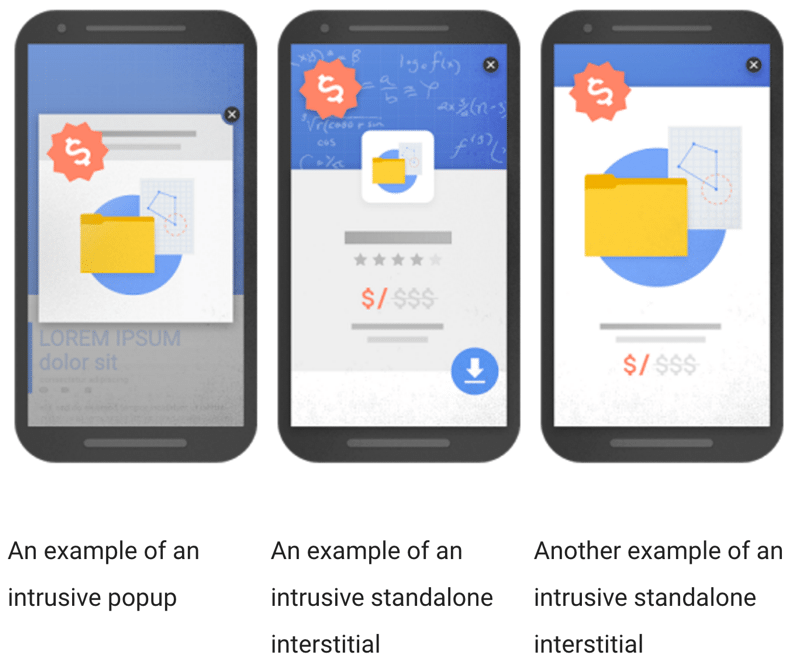As you may have heard by now, come January 2017, Google’s search rankings will begin penalizing mobile websites that have pop-ups and interstitials. The reason? Google says it is focused on providing users with a smooth mobile experience and allowing them to access the information they are looking for without interruption. The search provider believes that even if “optimized” for mobile devices, these features contribute to a poorer experience because of the devices’ smaller size.
Here are a few examples from a recent Google post of interstitials that will be penalized:
These examples include some common tools for email subscription used by many online retailers.
Not all interstitials will be treated equal, however. Google will not penalize mobile sites that use them for legal obligations, login dialogs, or banners that use a “reasonable amount” of space and are easily dismissible as seen below. It should be noted that the sizing specs for “reasonable” have not yet been specified.
Will It Really Matter?
So how much will this actually affect retailers? We don’t know yet. It’s only one of hundreds of criteria that determine Google’s ranking. In their blog post, Google states that “a page may still rank highly if it has great, relevant content.” Relevance seems to be the key word here. For larger retailers, such as WalMart, any negative impact may be minimal for them.
Smaller online retailers, who consistently rank lower and rely more heavily on ads to drive traffic, may feel the negative effect of keeping their pop-up is worth it. Growing their email list allows them to continually market their products to potential customers, and this may be their highest priority. Retailers will need to determine which side of the coin they fall on and whether the potential benefits outweigh the risks.
Are There Workarounds?
In looking at the allowable interstitial that uses a “reasonable amount of screen space,” there may be an opportunity to embed or link a subscription form into that appropriately-sized interstitial. It may be only a matter of time before maximizing that area will become the next targeting strategy.
Going “Old School”
This change does reinforce the importance for retailers to once again focus on the “old school” best practices for email collection. Strategies often abandoned in favor of a pop-up or lightbox, such as a prominent sign-up that lives above the fold on almost all pages of the site will be critical for maximizing sign-ups for mobile users.
Pop-ups and interstitials will still be allowed on the desktop version without penalty, which is good news for retailers looking to grow their subscriber file while still using these methods. But if you didn’t think providing customers with a smooth, mobile-first experience was absolutely critical before, it certainly is now. If you would like to see how mobile-friendly your website currently is, Google has a quick and easy tool for that.
While there’s still plenty of time to prepare prior to January, I wouldn’t wait. The conversation about email acquisition and other interstitial strategies should take place now so any changes can be implemented well in advance.
Greg Zakowicz is Senior Commerce Marketing Analyst for Bronto Software


